Photo essay: Women Farmers of Agroecology in A.P. and Karnataka
Farms should mimic the forest
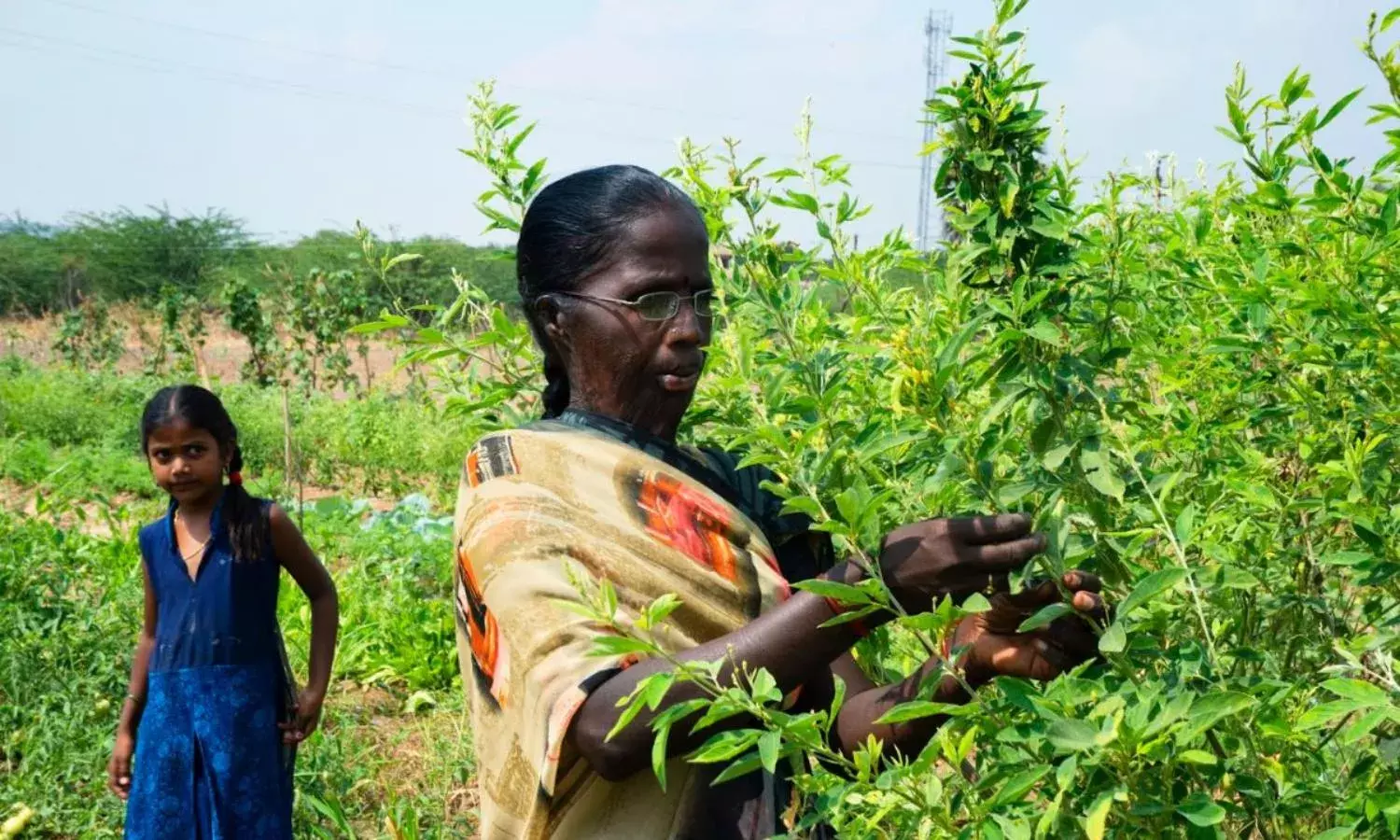
Earlier this year, just before the pandemic broke out, nearly a hundred agroecology practitioners, advocates, researchers and policymakers from more than 30 countries convened in southern India for a week-long learning exchange.
Sponsored by the Agroecology Fund, through field visits and workshops in Andhra Pradesh and Karnataka the group saw firsthand the successes of the zero-budget natural farming practices, now known as community-managed natural farming, adopted by more than half a million smallholder farmers in these states.
Networks of women's self-help groups have been instrumental in spreading the principles of agroecological farming from village to village, a social and community mobilisation without which it would be impossible to scale up these practices.
Today, many women have formed collectives, leasing land that was previously lying fallow. They work on small plots to grow healthy, pesticide-free food for their families, and sell the surplus.
Biodiversity flourishes on their plots, and the soils are fertile, although the regions we visited are some of the most drought-prone in the country. Here farmers are no longer dependent on expensive chemical pesticides and fertilisers, or caught in a cycle of debt.
Suicides are no longer rampant among farmers, and rural families have decided to stay on instead of abandoning agriculture and migrating to the cities in search of livelihood.
Reliant on little other than the inputs on hand, the farmers we met – men, women, young and old – have seen their yields, health and incomes increase; through agroecological practices they have found food sovereignty, self-reliance, and dignity in farmwork.
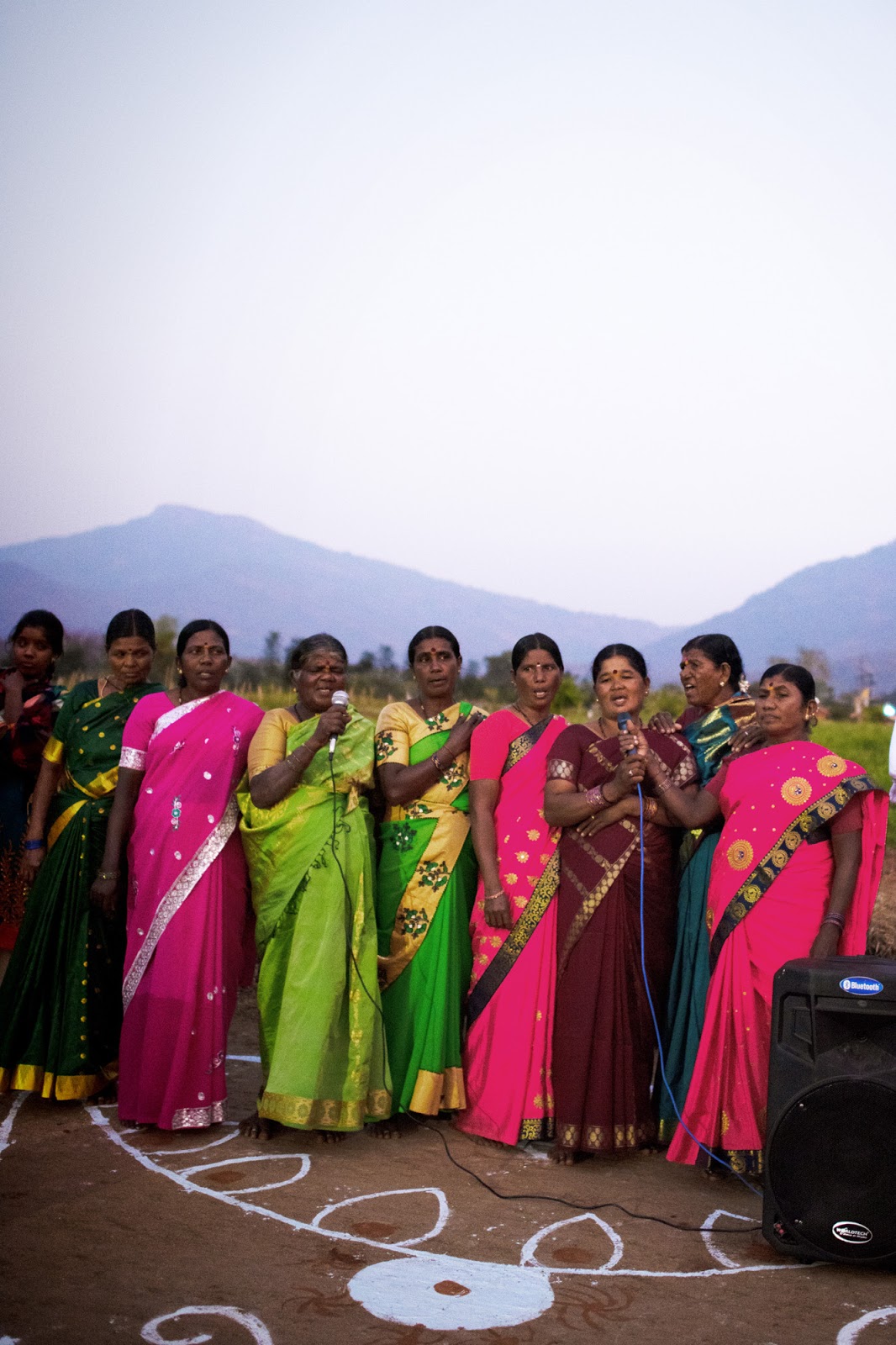
According to the most recent official government data, more than 70% of rural women workers in India are engaged in agricultural work. Yet, women own 13.9% of landholdings. Commercial, industrialized agriculture has invisibilized women farmers in much of the Global South; India is no exception.
Amrita Bhoomi, a peasant agroecology training center was established to prove that an alternative model can exist. A member of La Via Campesina, the center offers training based on the farmer-to-farmer approach, centering agroecology, peasant rights, food sovereignty and social justice. “Agroecology is more than a set of farming practices; for it to be adopted on a wide scale, indigenous peoples, women, and youth are integral,” says coordinator, Chukki Nanjundaswamy.
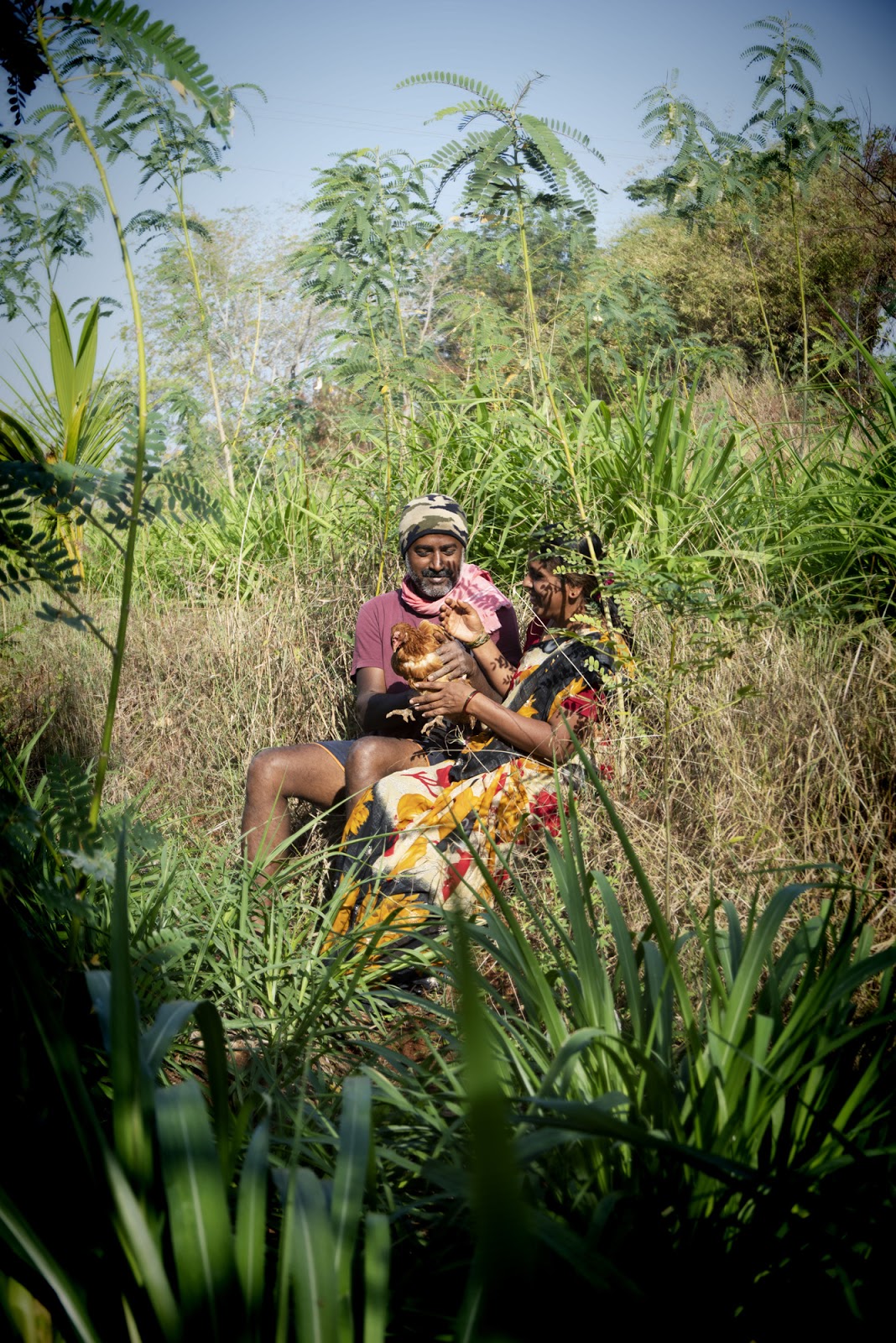
GT Sujatha and her husband M Jagadish have been practicing natural farming for nearly ten years on their 4-acre farm in Gottigehally, Karnataka. The transition from chemical farming was challenging, says Sujatha, but as they learned about the health hazards associated with chemical pesticides and fertilizers, their resolve strengthened.
Now, their farm has been cultivated according to the five-layer model laid out in natural farming: an ecosystem that is more forest than field. “Ours is a mini world. There are maybe more than 200 varieties growing on my plot,” says Jagadish.
The couple grows banana, coconut, guava, jackfruit, sweet potatoes, pulses and lemons, while also experimenting with coffee on the sloped areas of their farm. Chickens and goats are free-range. Taller trees – silver oak and moringa – form a natural fencing, and when these trees shed their leaves, this adds to the mulch and creates humus in the soil.
Sujatha recently won the best woman farmer award at the district level. Like other women farmers, she manages farm work (taking animals to graze, milking the cows, cutting the fodder etc) and household work as well. After completing a value addition workshop that was offered by the state government, she now makes and sells finger millet malt, using Whatsapp to market it and supplement their income.
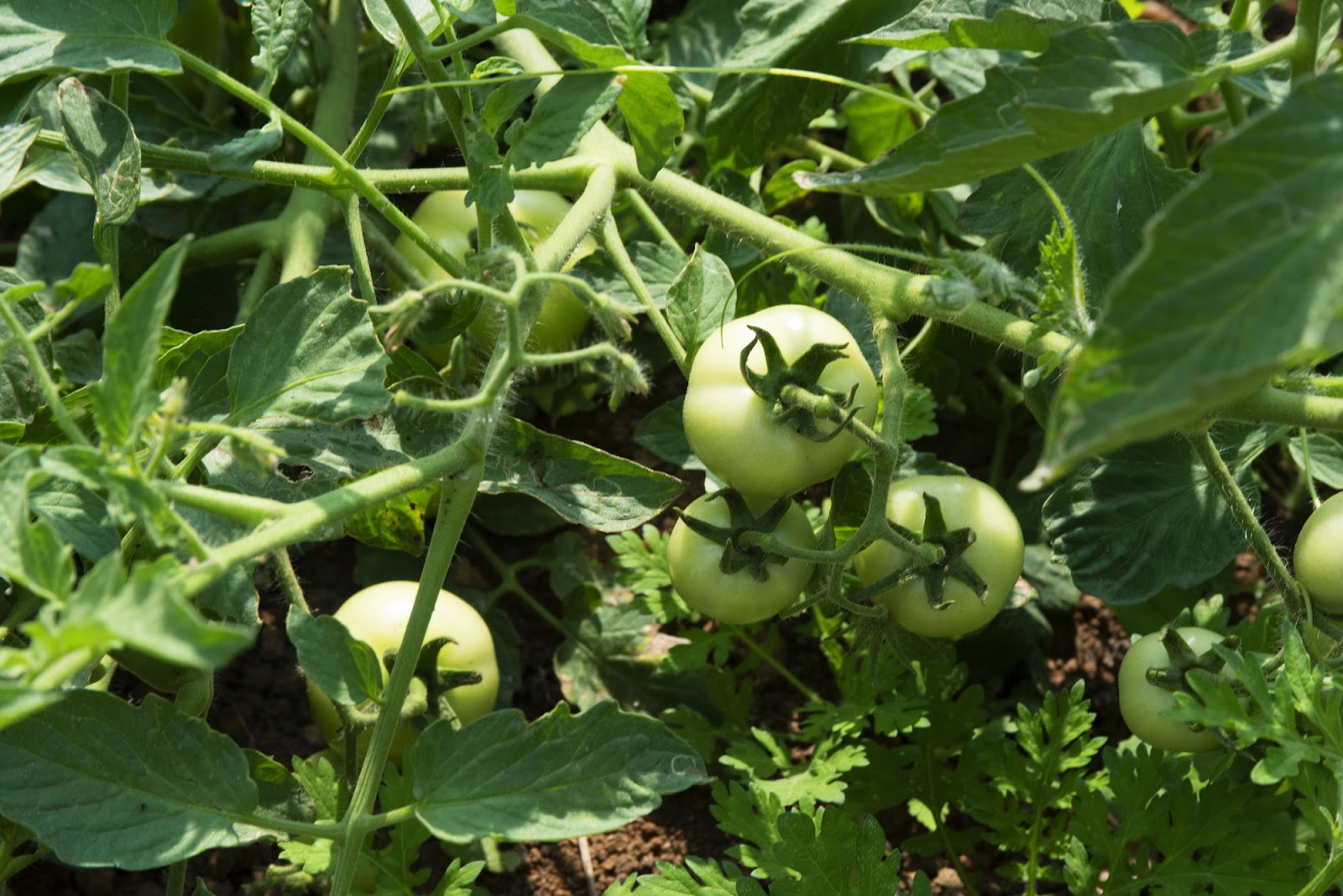
We met with scores of landless women farmers in Anantapur – some are widows of farmers who have killed themselves, others were rescued from trafficking, nearly all have been victims of caste discrimination. Through the Rural and Environment Development Society (REDS), an NGO which for the past two decades has worked to uplift rural women in this region, a group of these women farmers have come together to collectively lease land that was previously lying fallow. Now, they share their skills, knowledge, and labour, working on small individual plots in the farm to grow pesticide-free food for their families.
On their 8 acres, biodiversity flourishes – guava trees are intercropped with horsegram, groundnut and sorghum; radish, carrot, and beetroot grows under the shade of moringa. They sell the surplus at their farm store -- a micro-enterprise that they told us they are eager to see grow. The women save seeds every season; through their recharge pit they have replenished the groundwater table. In just a few short years, they’ve restored soil fertility to the point that the farm supports “do-nothing” plots of millet, where seeds fall at harvest time and grow on their own.
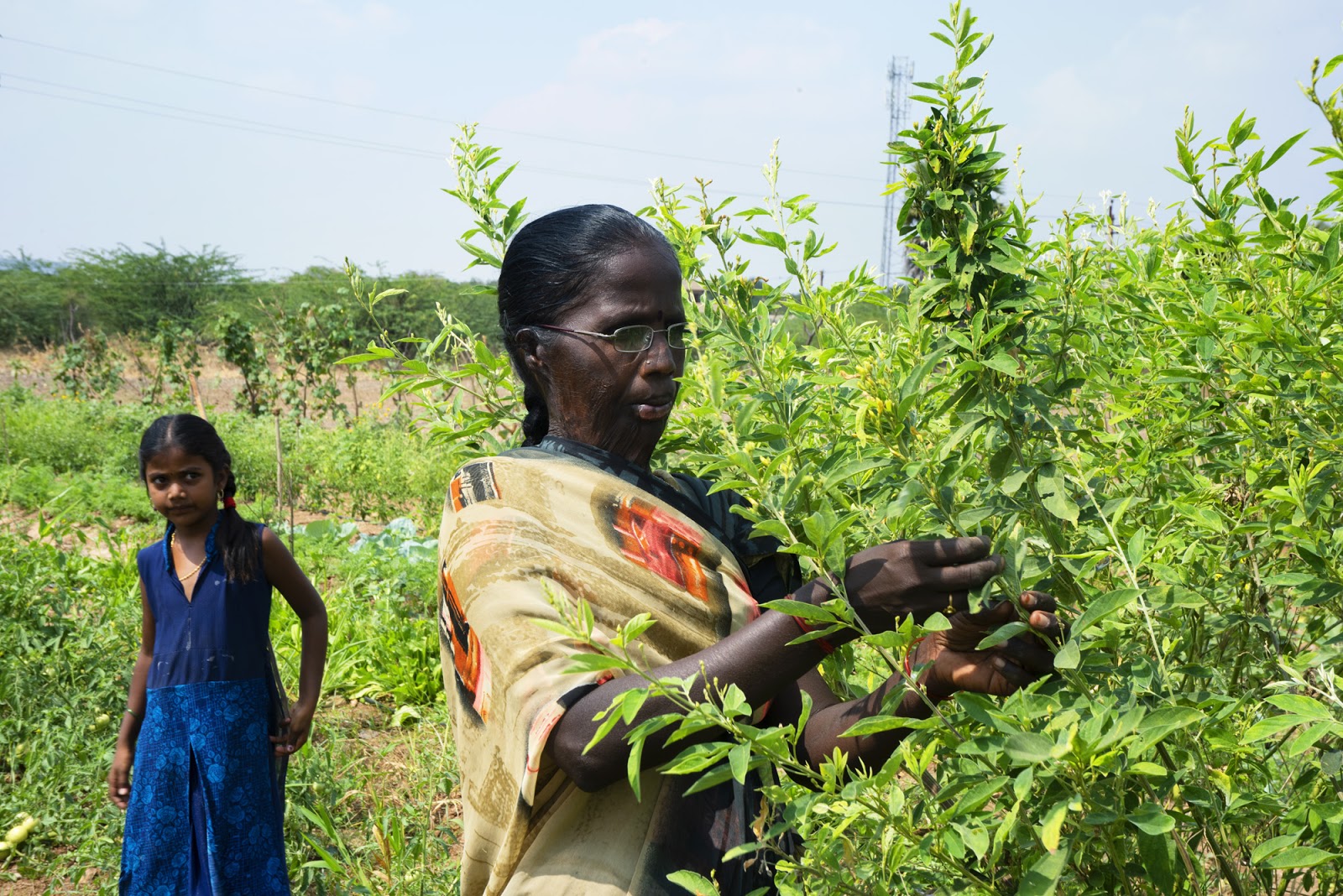
The Rural and Environmental Development Society (REDS), is a 22-year-old NGO working on rural development, sustainable agriculture, child rights and anti-trafficking in Anantapur.
The women REDS supports are often landless women farmers, single mothers, victims of trafficking, or victims of domestic violence. Many of them are widows of farmers who had killed themselves. Through REDS, we met with a group of women who have formed collectives to lease lands that were previously lying fallow. Considered to be “the poorest of the poor”, they have come together to share their skills, knowledge, and labour, working on small plots to grow pesticide-free food for their families, and sell the surplus at their farm store.
On their 8 acres, biodiversity flourishes – guava trees are intercropped with horsegram, groundnut and sorghum; radish, carrot, and beetroot grows under the shade of moringa. The women save seeds every season; through their recharge pit they have replenished the groundwater table; and in just a few short years, they've restored soil fertility to the point that the farm supports “do-nothing” plots of millet, where seeds fall at harvest time and grow on their own.
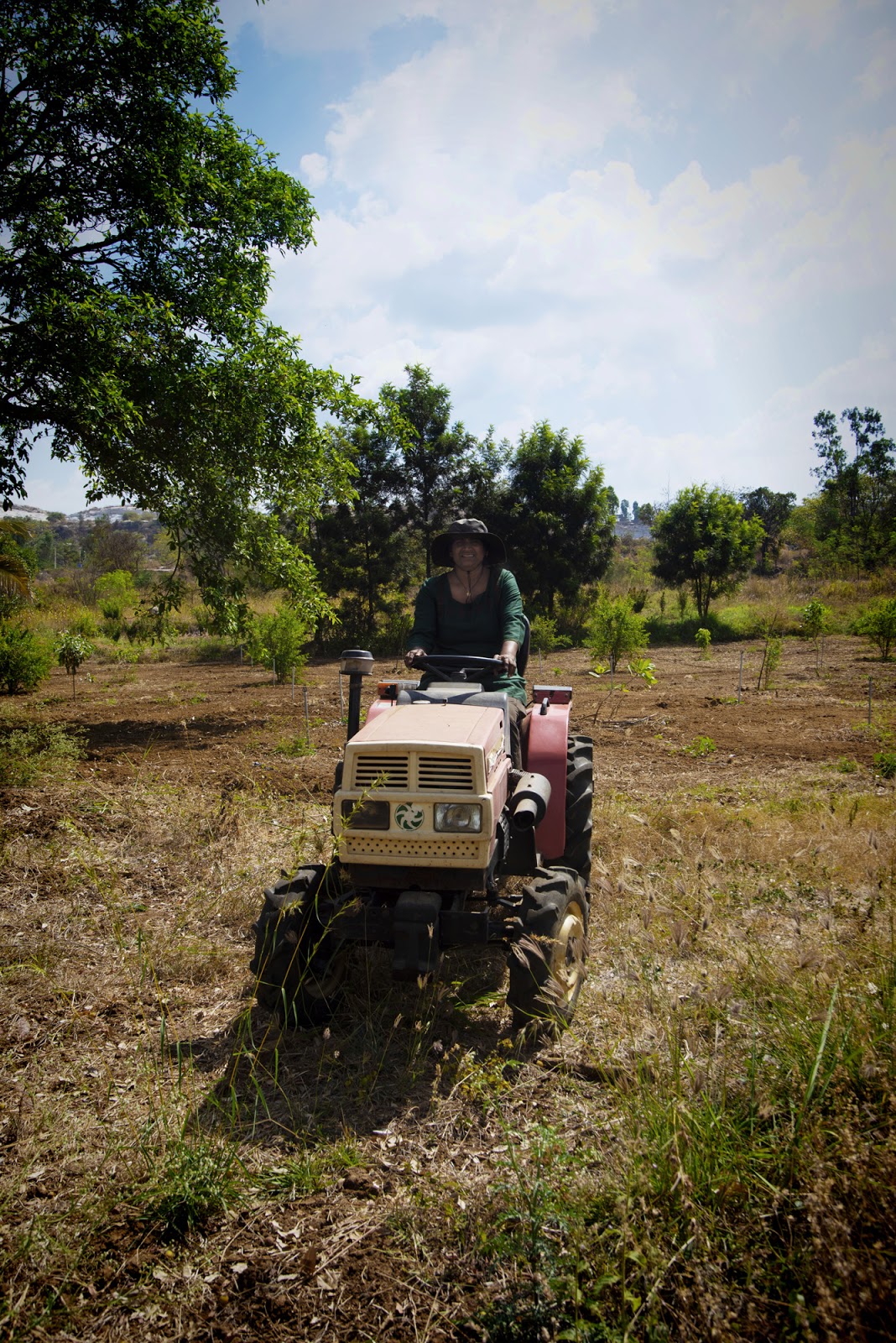
In recent decades, many rural households in India have abandoned farming, with men migrating to cities in search of other livelihoods. This has also led to the feminization of agriculture across the subcontinent, most acutely in rainfed areas. At the same time, there is a growing trend of urban professionals being drawn towards agroecology.
Prathibha Nagvar is one of them. A former software engineer, she had tended little more than a kitchen garden during her years in the US; today she practices natural farming on an 11-acre farm on the outskirts of Bangalore. Her husband too now joins her in farmwork. Together they grow pulses, cereals, fruits, vegetables and oilseeds; she tells us proudly that they don’t have to depend on the market at all.
Inspired by the teachings of Masanobu Fukuoka and Subhash Palekar, Prathibha engages in farmer-to-farmer outreach, helping smallholders transition to agroecology. For marginalized producers, agroecology offers a way out of the debt cycle, she says: there’s no need for expensive inputs or labor. “The farm may look unkempt but we’re letting nature do all the work,” she says.
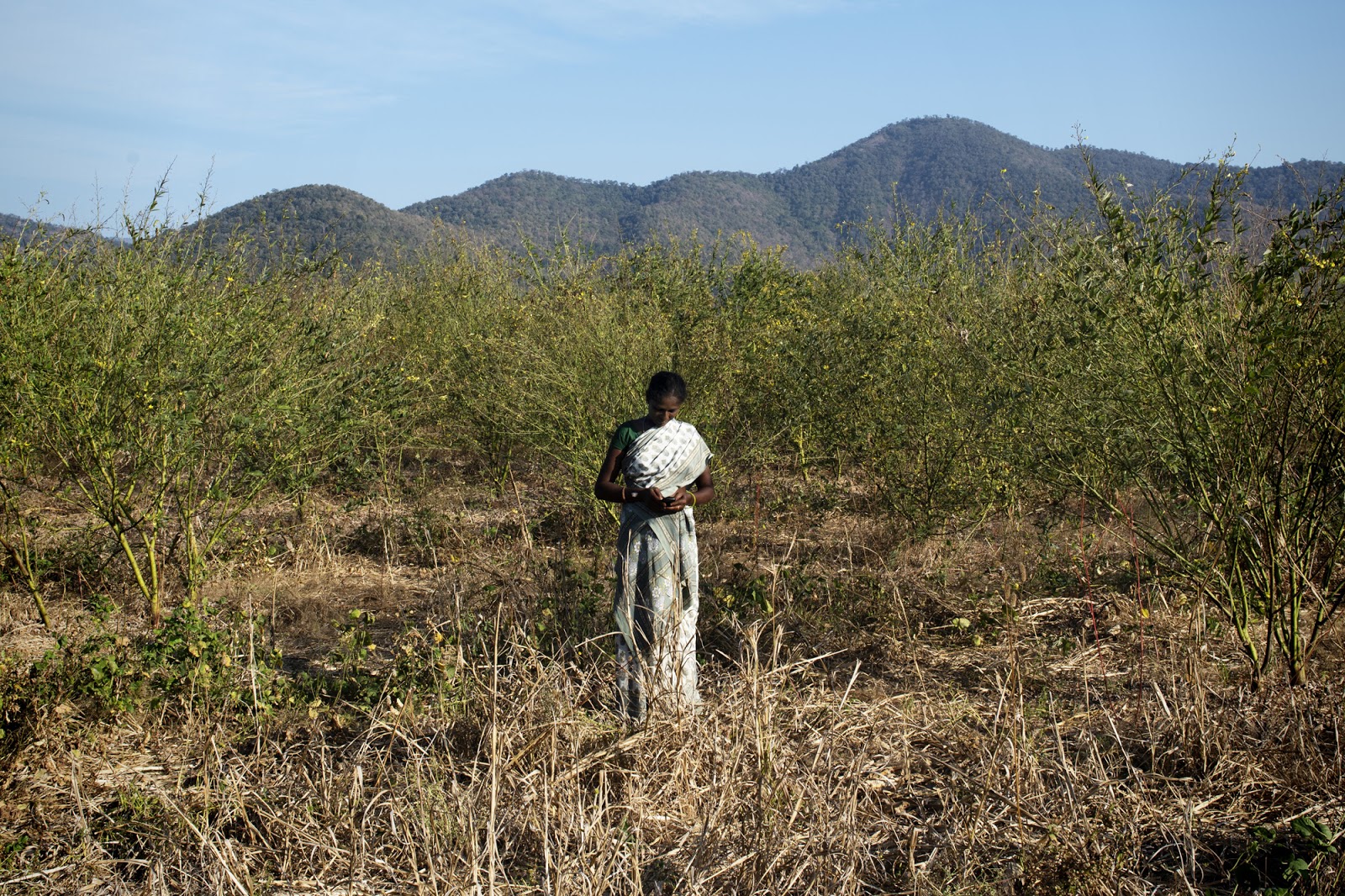
Kethamma, along with nearly 100 other families from Kunta Guda Colony in the BR Hills, Karnataka, has been practicing natural farming for the last 20 years. Farmers in neighboring parcels of land practice high-input conventional agriculture, and were skeptical of her efforts.
Still, despite the resistance she faced, she persevered. With the support of Amrita Bhoomi agroecology school, she continues to grow millets, beans and other crops without relying on the chemical fertilizers and pesticides that have indebted her peers and depleted so much of the soil in the region.
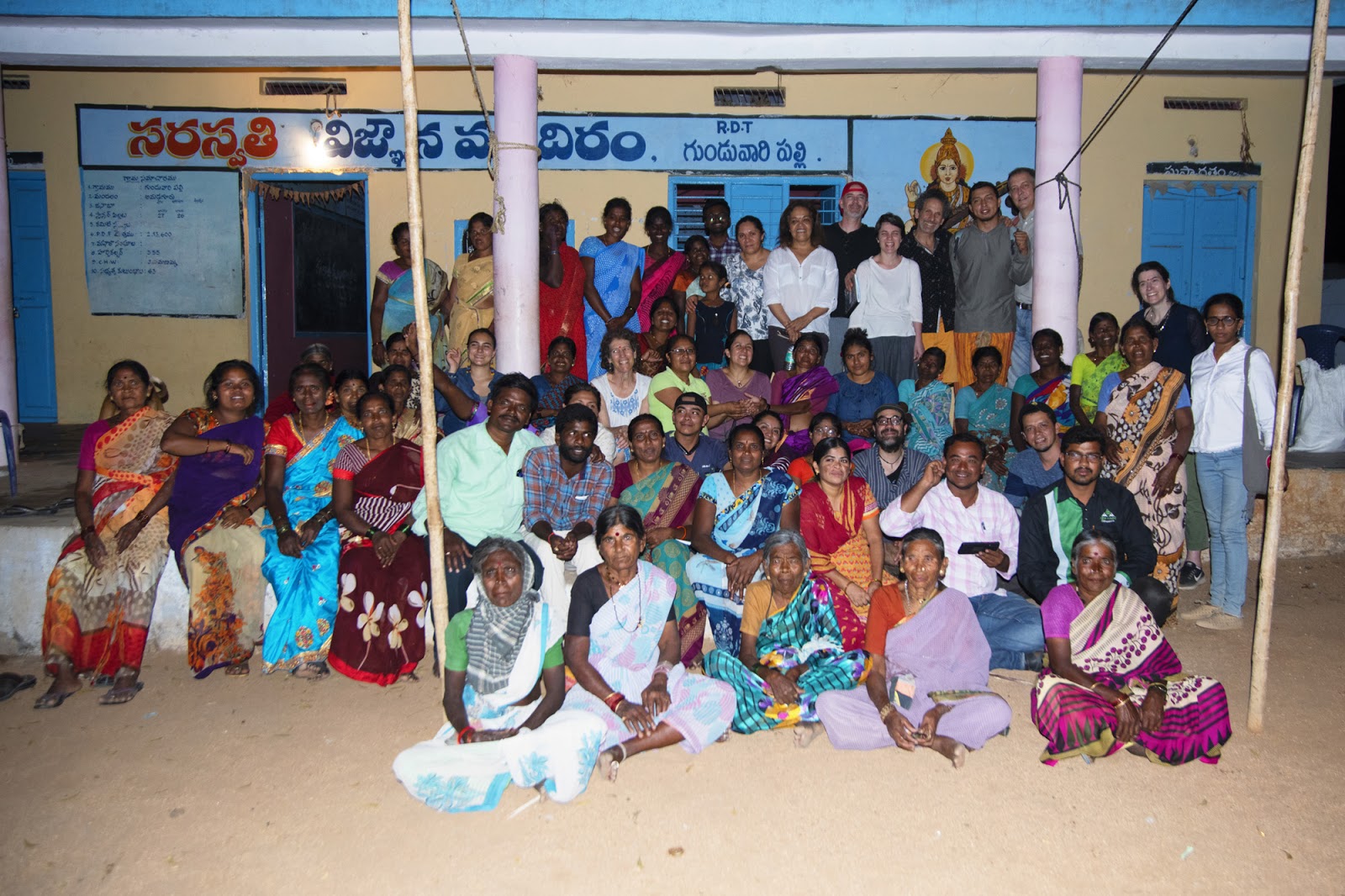
In Andhra Pradesh, women's self-help groups have been instrumental in spreading the principles of agroecological farming from village to village – without this grassroots farmers’ movement, it would be impossible to scale these practices up and out to nearly 600,000 farmers today, or to reach 6 million farmers by the end of the decade.
Vijay Kumar, the advisor to the state government who is in charge of implementing the Community Managed Natural Farming (formerly Zero Budget Natural Farming) programme told us, "Women are our biggest strength. Without women, there would be no natural farming.” At the FAO symposium on agroecology in 2018, Vijay Kumar added that most of the programme’s resource people and trainers are women farmers.
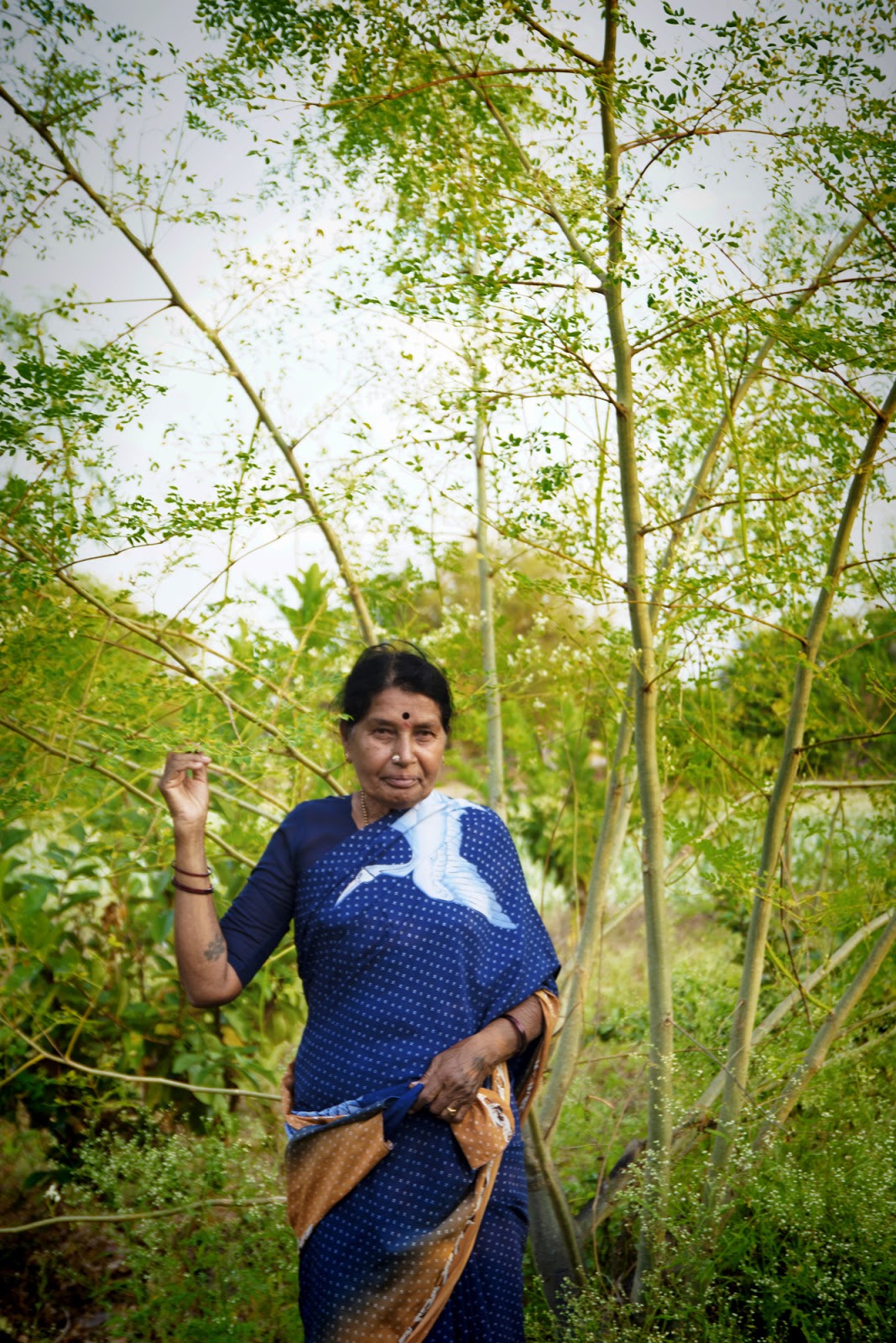
In much of the Global South, women like Bayamma Reddy have long been the guardians of indigenous seeds; through agroecology, their wealth of knowledge and role on the farm has regained value. When her sons left to the cities to study further, this elderly women farmer began to practice natural farming on the plot of land near her house, using the knowledge and skills that had been passed down to her across generations. She is from Balakabari Palli, Andhra Pradesh, which lies in one of the most drought-prone districts in the country.
In these regions, commercial crops that require irrigation and other expensive inputs have proven to be untenable. To ensure a diverse food basket and mitigate the risk of crop failure, she and her husband follow the traditional practice of navdanya (sowing a combination of nine cereals and millets) before the onset of the monsoons.
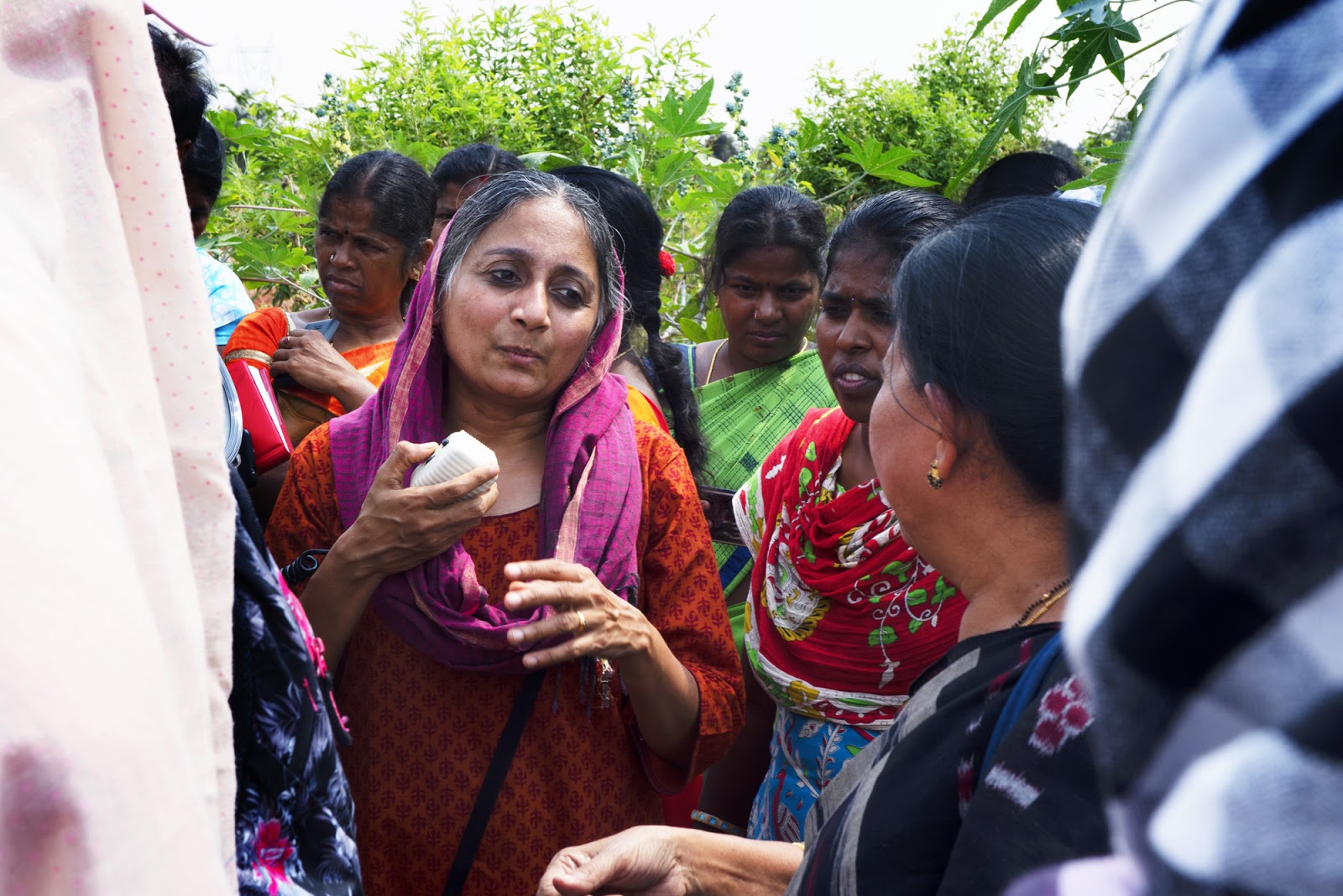
Kavita Kuruganti is the founder of ASHA, the Alliance for Sustainable and Holistic Agriculture. She is also associated with MAKAAM, or Mahila Kisan Adhikaar Manch, a nationwide forum of more than 120 individuals and organisations of farming women, of women farmers' collectives, civil society organisations, researchers and activists, drawn from 24 states of India, to secure due recognition and rights of women farmers in India.
In a recent interview in Devex, Kavita stated “Women have traditionally engaged in labor-intensive work like transplanting, weeding, and harvesting. As agriculture gets oriented towards markets, with an increasing reliance on herbicides and machines, men take over the decision-making.” Agroecology is how women reclaim their decision-making rights.
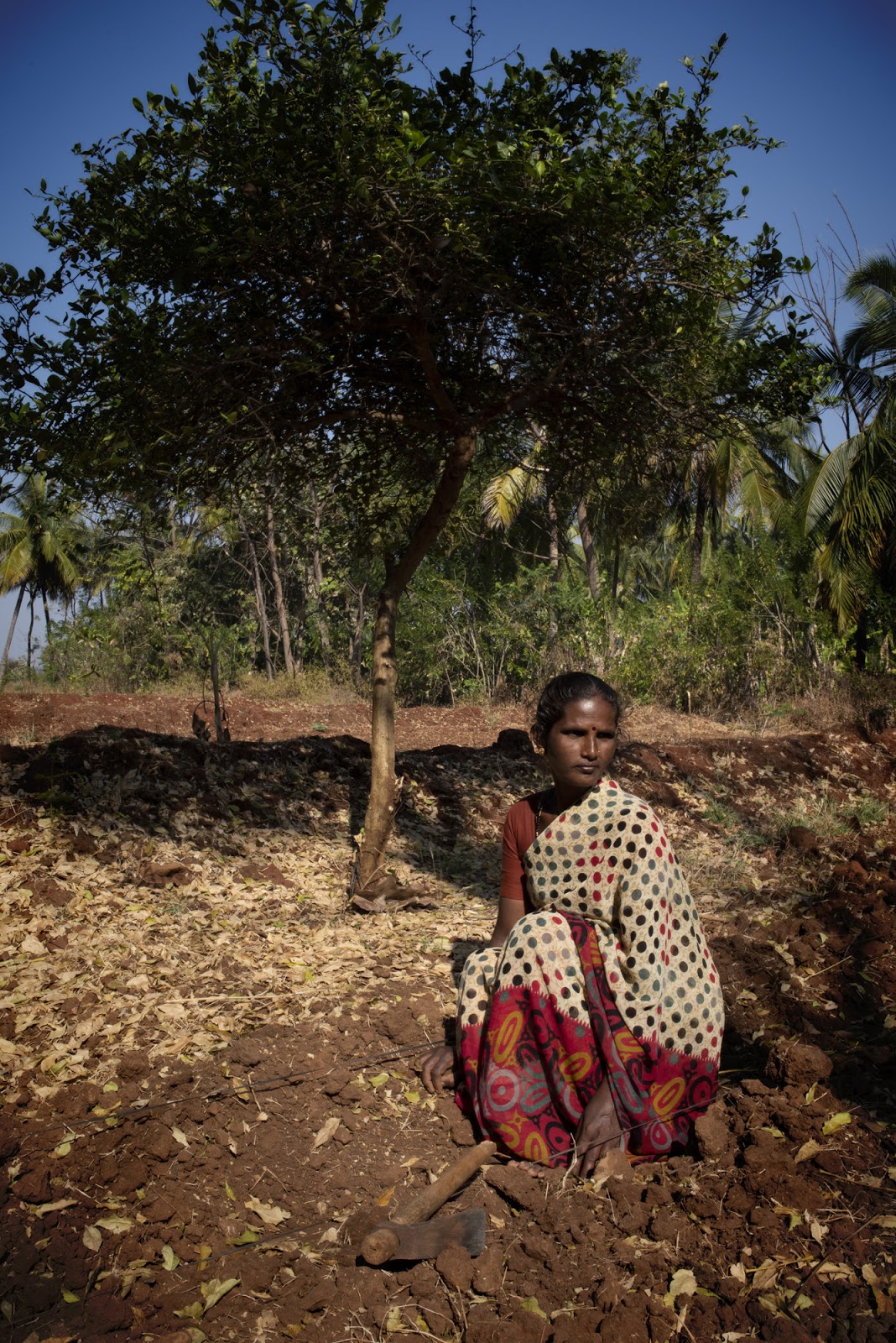
“Nisarga Nisargaka Savayava Krushikara Sangha” is a self-sufficient cooperative group in Honnur, Karnataka. All members practice natural farming together, abandoning traditional practices of caste discrimination that are unfortunately still prevalent.
Bajgya is one of them. In fact, this is one of the reasons why the Zero Budget Natural Farming initiative has been so successful so far. Landless farmers, tribal farmers, women farmers, and farmers from “lower caste” backgrounds have all become agents of change, generating new economic relations and upturning the stratified social order of old.
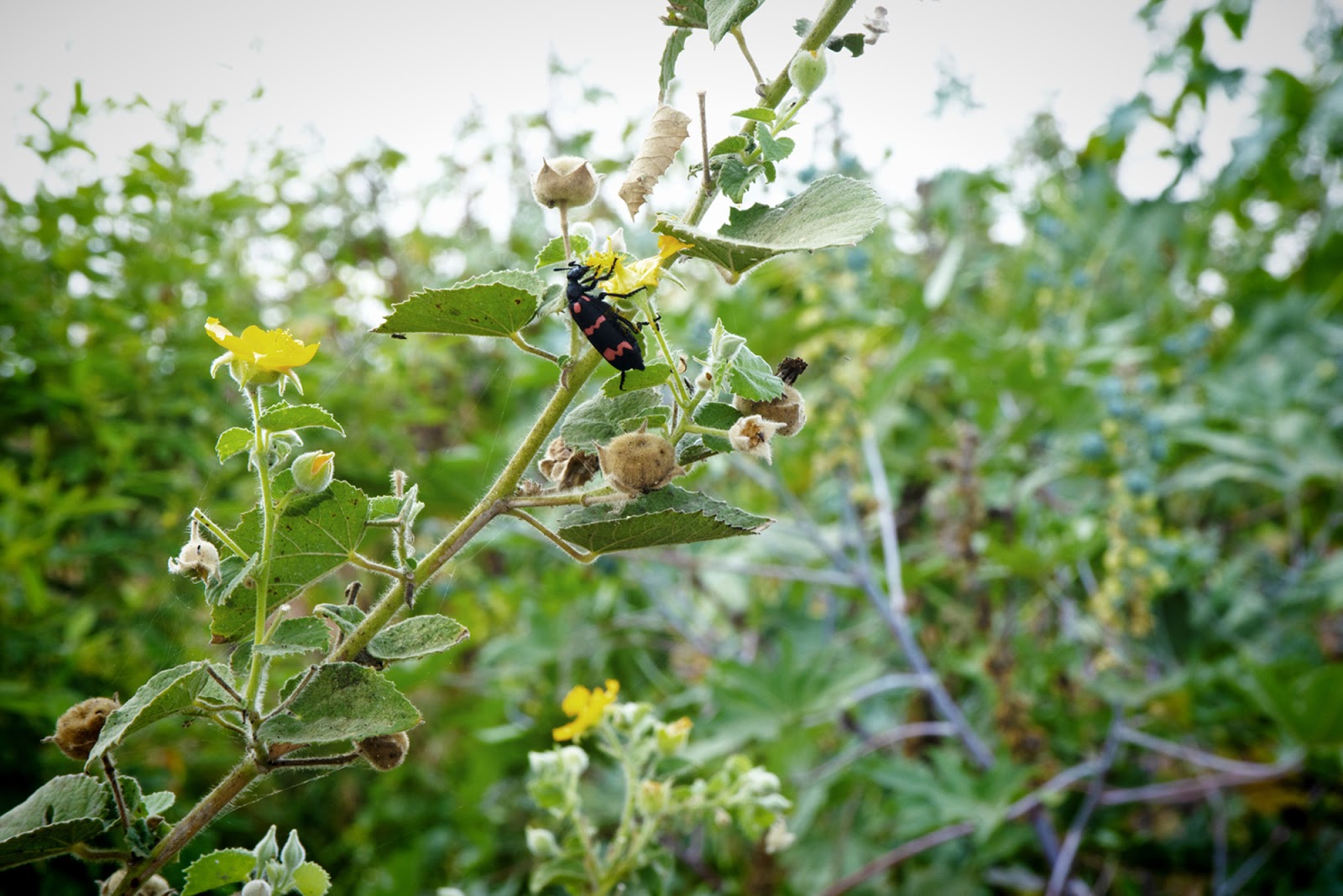
For 2019-2020, India’s expenditure on chemical fertiliser subsidies is estimated to be around USD 11,000 million; agroecological farming receives not even 1% of this budget. Still, on the ground, there are heartening signs of progress. In Andhra Pradesh, around 600,000 farmers have adopted natural farming practices. Azim Premji Philanthropic Initiatives has granted 100 crores to the programme, and it has received some international funding as well.
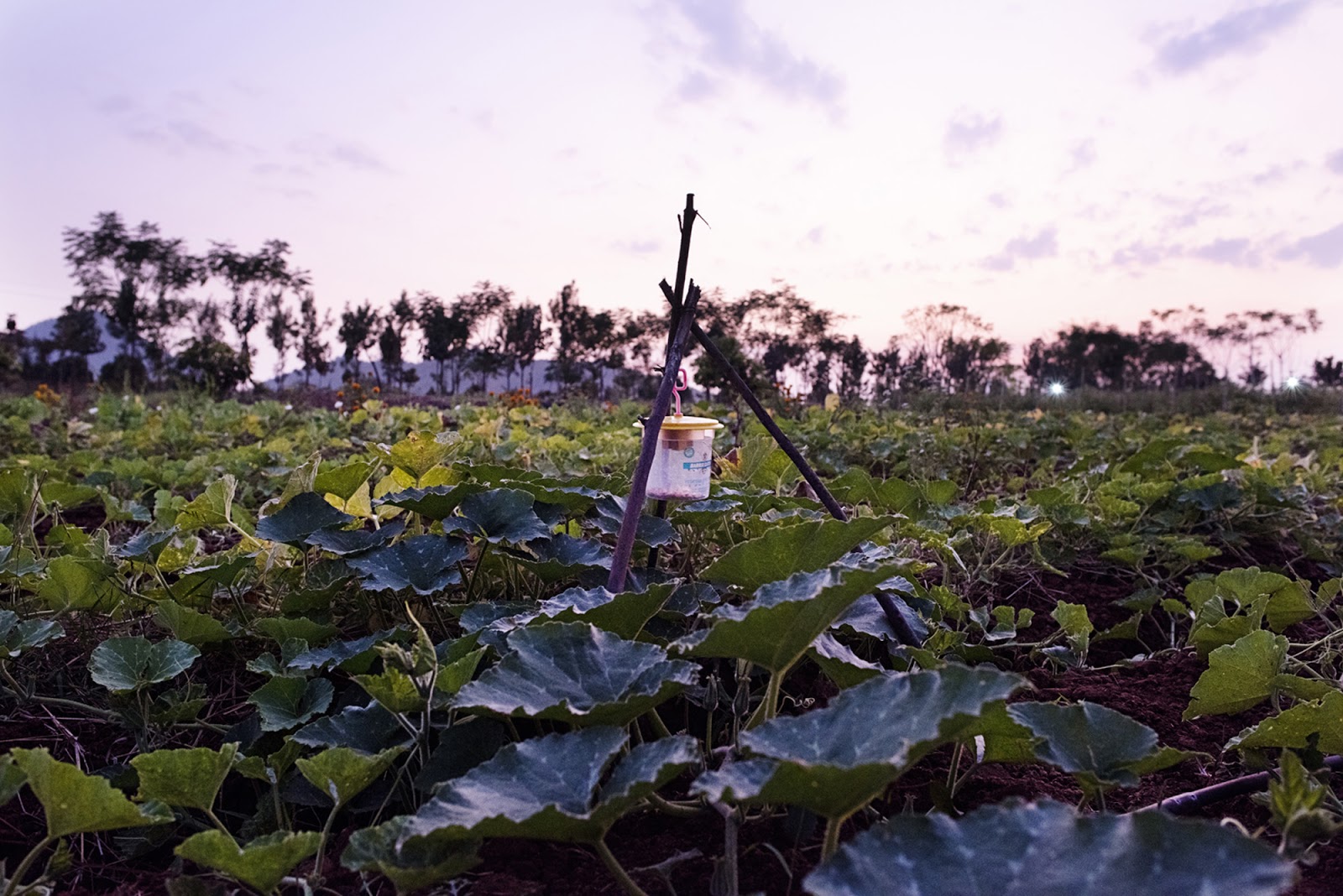
Yet, on the whole, current funding across the globe deeply undermines the prospects for agroecological innovations for resilience and sustainability. According to Coventry University’s Centre on Agroecology, Water and Resilience, funding for agroecological research in both the UK and the US is less than 1.5% of the total budget for agricultural R&D. Overall, the bulk of international funding and aid still supports “Green Revolution”-style models of industrial agriculture, heavily dependent on purchased external inputs such as hybrid seeds, chemical fertilizers, and pesticides.
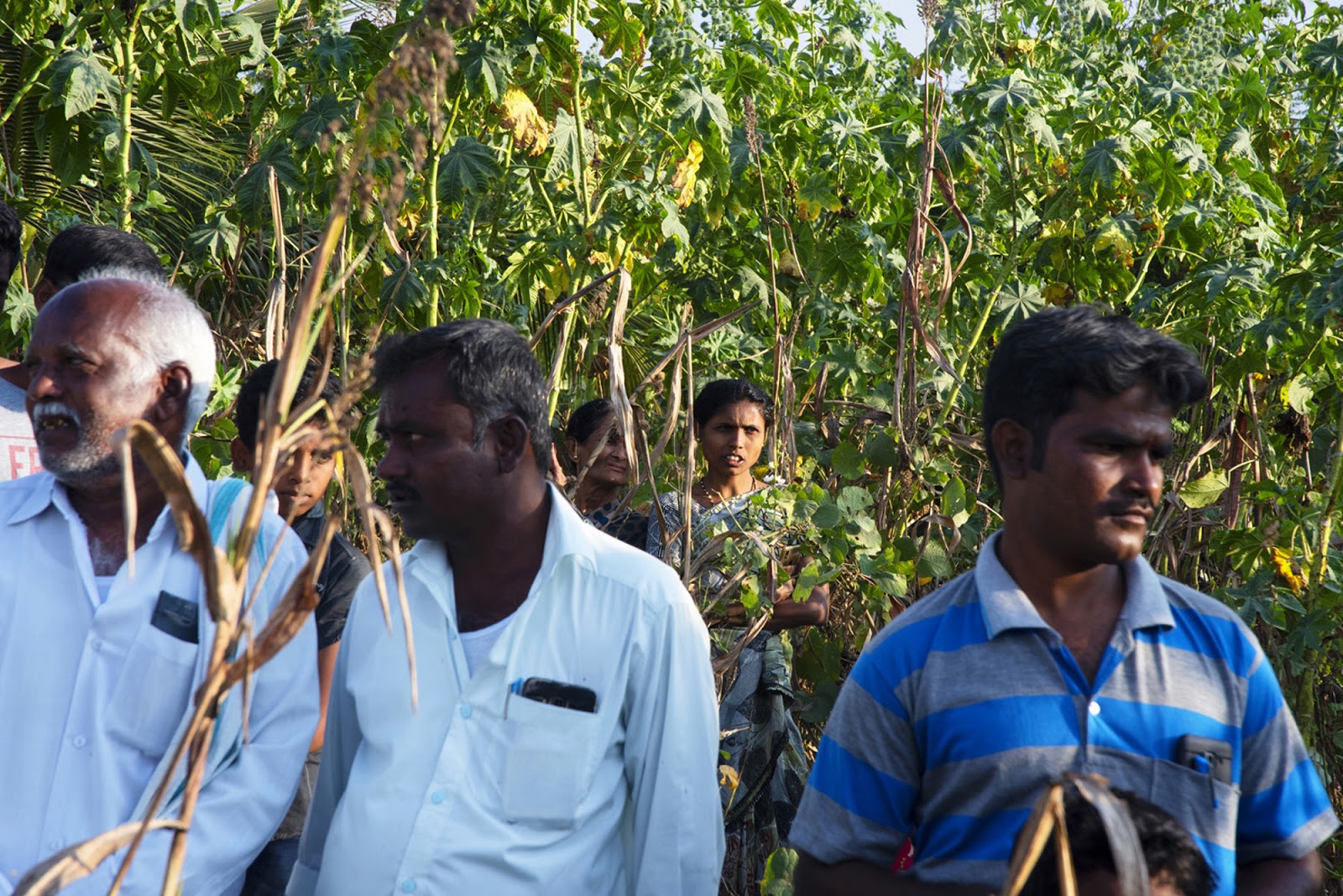
The natural farmers we spoke with find themselves protected against the vagaries of the climate. Relying on little else other than the inputs they have on hand, they've seen their yields – and incomes – increase (sometimes, by an astonishing 200%!).
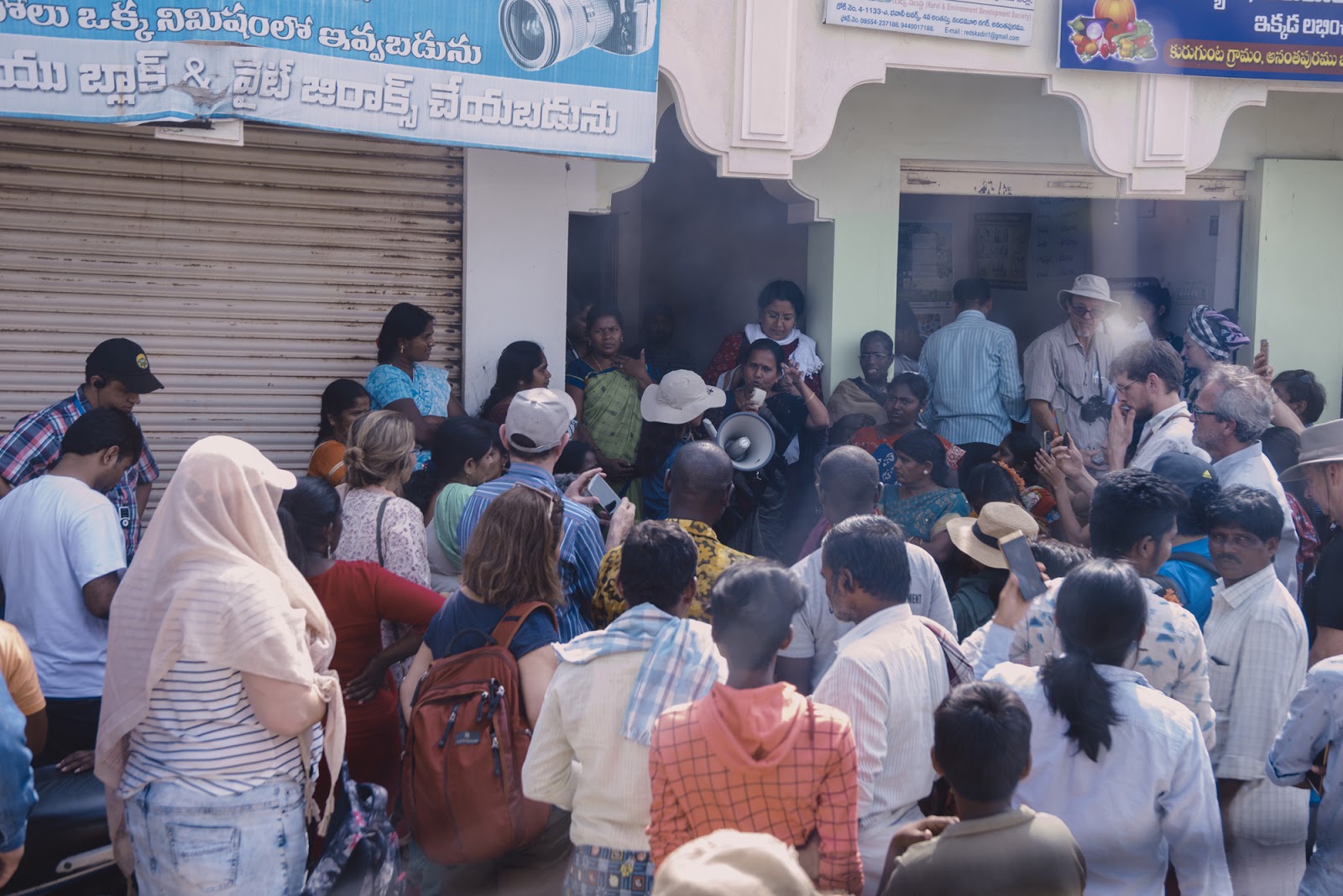
At the collective farm we visited in Andhra Pradesh, the women have devised a rota system for farm work that allows them to manage both production and care work at home. They pay each other partial wages during the agricultural season, so that there is some access to cash for household needs before harvest time.
Through such innovations and agroecological practices, they've found food sovereignty, self-reliance, and dignity. "Women are showing that they can do positive things for themselves and their communities. This improves their status in society," said Bhanuja, a women's right activist who is the founder-president of REDS, the Rural and Environment Development Society.
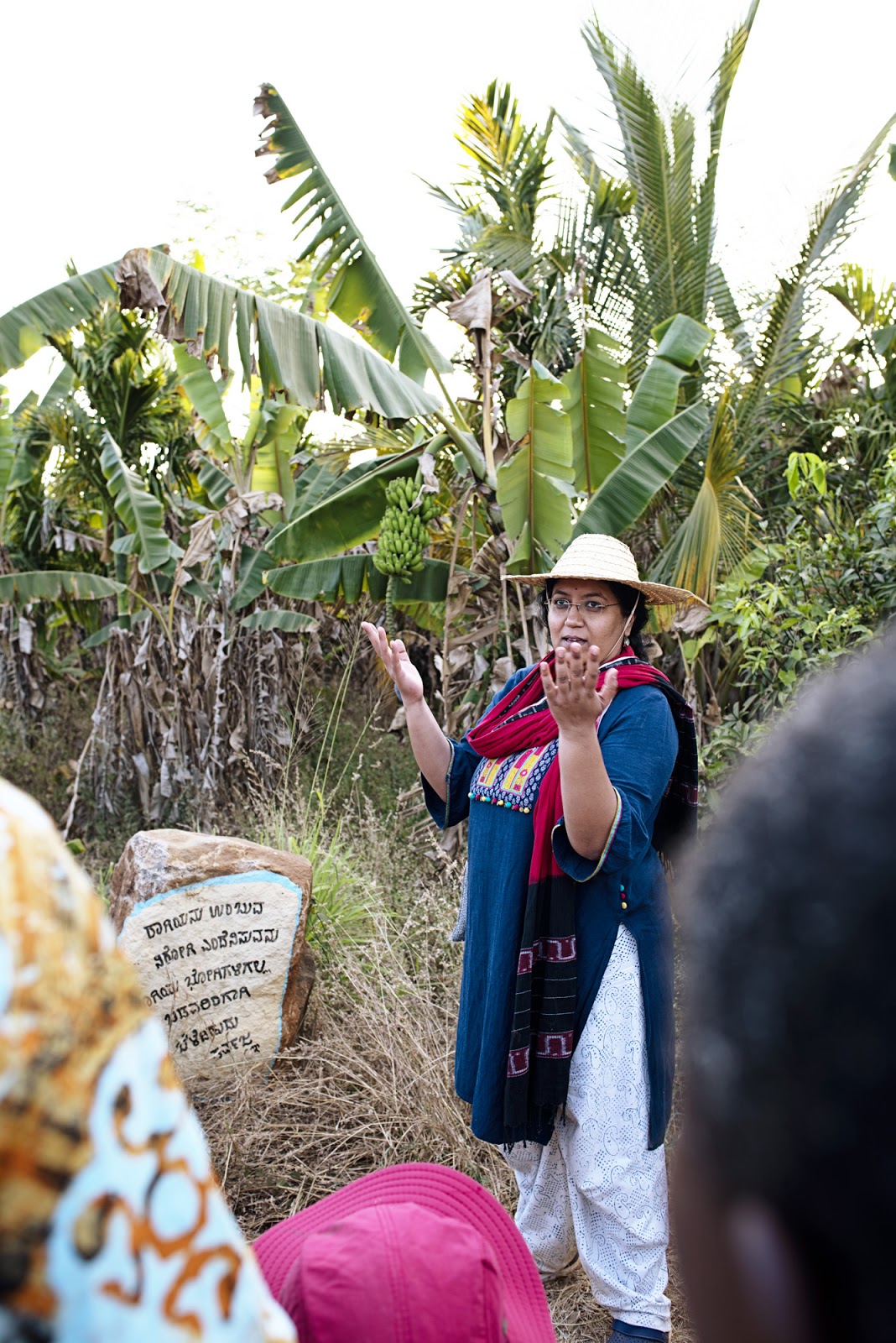
Chukki Nanjundaswamy works with KRRS, the farmers’ movement of Karnataka, and is the coordinator of Amrita Bhoomi, an agroecology school that is part of the La Via Campesina network. “We knew we needed a space to save our native varieties of seeds and transmit the traditional knowledge of farming which is agroecological, which does not harm nature. And that’s how Amrita Bhoomi was born, out of the womb of the farmers’ movement of Karnataka,” said Nanjundaswamy.
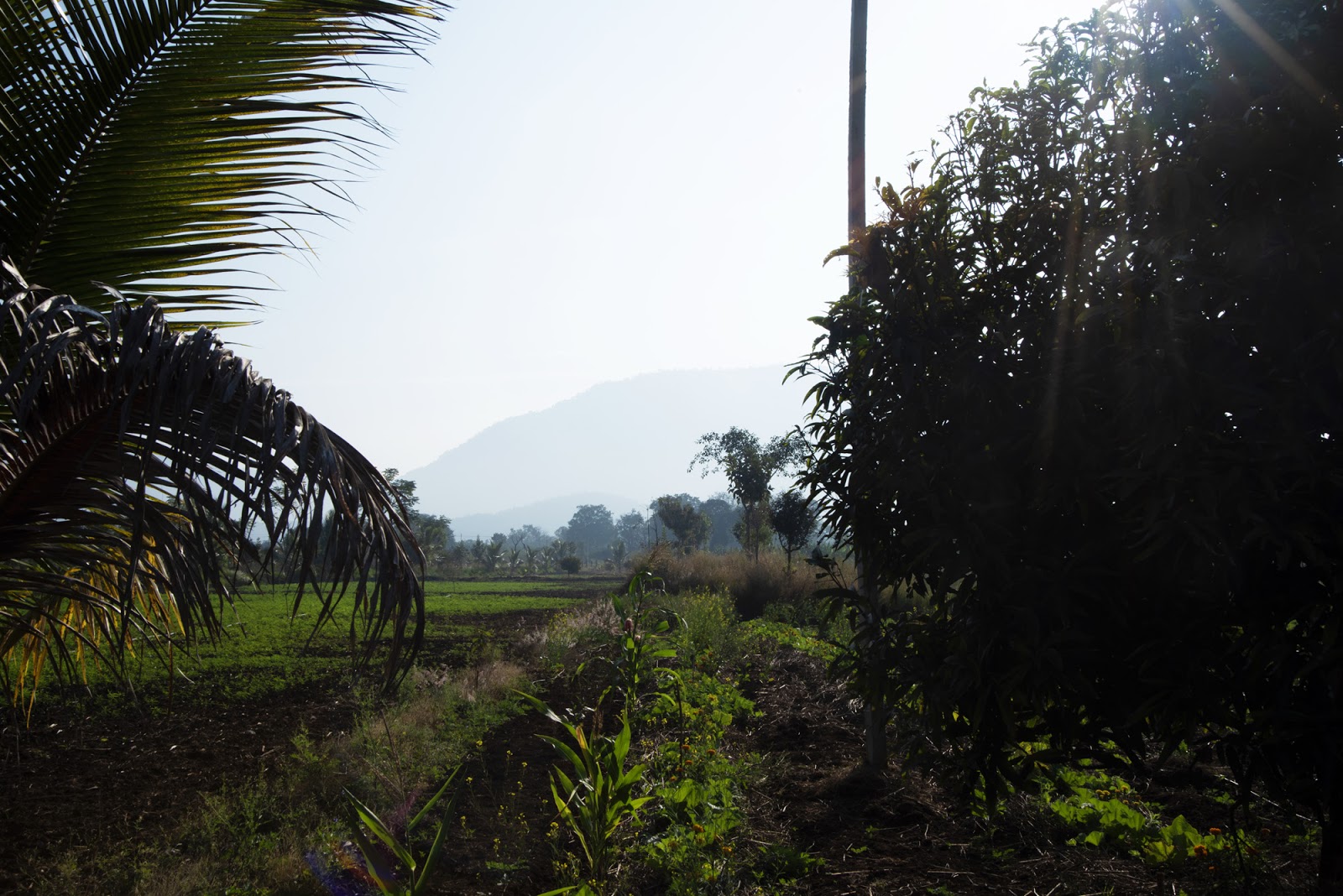
According to natural farming principles, farms should mimic the forest. In the five-layer model, trees produce dispersed shade, bushes or vines grow beside the crops, and cover crops grow under them. The field’s biodiversity, pest resistance, moisture and soil fertility improves. And of course, this model produces a much more varied diet, and reliable income in every season. The farm may look unkempt but we’re letting nature do the work,” explained Prathibha Nagavar, who has been practicing natural farming for several years.
This work was produced with the support of the Magnum Foundation, Panta Rhea Foundation and the Agroecology Fund. Text: Amrita Gupta. Photographs: Soumya Sankar Bose



